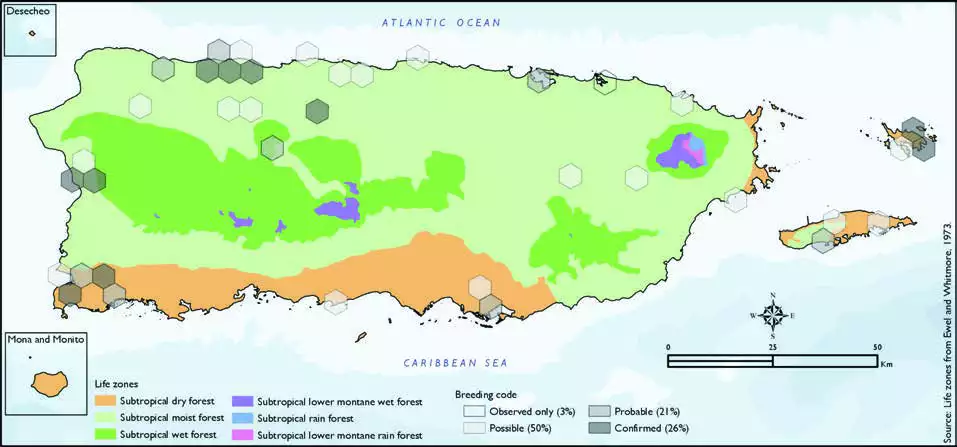Least Grebe
Description
The least grebe (Tachybaptus dominicus), an aquatic bird, is the smallest member of the grebe family. It occurs in the New World from the southwestern United States and Mexico to Argentina, and also on Trinidad and Tobago, the Bahamas and the Greater Antilles.
Threats
The least grebe, while a species of least concern, experiences a number of predators, particularly early in life. Large fish species and turtles are reported to take young grebes, and bird-eating raptors, including the bat falcon and the golden eagle, have been observed taking adult birds.
Distribution & Habitat
The Least Grebe occurs from the south-central United States
through South America including
the West Indies, where it is
uncommon on Puerto Rico
(Raffaele and others 1998).
It can usually be seen in the
Caño Tiburones Natural Reserve
(Oberle 2018). It also occurs on
Culebra and Vieques Islands
(Ventosa-Febles and others
2005), in the latter being an
extremely rare visitor (Gemmill
2015). It is found locally in the
lowlands, and it usually inhabits
freshwater ponds, canals,
temporary pools with thick fl oating vegetation (Oberle 2018),
and freshwater cattail swamps
(Raffaele and others 1998). The
atlas fieldwork yielded a total of
72 records within 38 hexagons
or 8 percent of the 479 total
hexagons (see map). Of the 38
hexagons where this species
was found, breeding met the
atlas definition of confirmed in
26 percent (10) of the hexagons,
probable in 21 percent (8), and
possible in 50 percent (19), while
the species was observed in 3
percent (1) of the hexagons but
without evidence of breeding
(see map).Least Grebe distribution. The map shows the highest breeding code by hexagon and overlaying the ecological life zones in
Puerto Rico. Note: percentages may not total 100 due to rounding. 37Least Grebe/Tigua

Breeding Habits
Previously published reports indicate that the Least Grebe
breeds through most of the year,
but the breeding activity peaks
from April to May and again
from September to November
(Raffaele and others 1998). The
nest is built over water among
emergent vegetation (Biaggi
1997, Raffaele and others 1998).
Atlas results show that this
species breeds throughout the
year with the most breeding activity in May (see chart).
Results (see table and map)
show that this species breeds
mostly in the lowlands within the
subtropical moist forest life zone
(62 percent of the hexagons)
and less commonly within the
subtropical dry forest life zone
(35 percent of the hexagons).
Conservation
The current population trend of the Least Grebe is described as
stable (Wetlands International 2012). This species is currently
listed as a species of least
concern by the IUCN (BirdLife
International 2016). Locally, this
species is not listed in any of the
threatened categories of PRDNER
and USFWS. In Puerto Rico, the
Least Grebe has a protected
habitat in land of 18 percent or
162 km2 of the total area covered by the hexagons where evidence
of breeding was found for this
species (908 km2).
Related Species
Family:
grebe